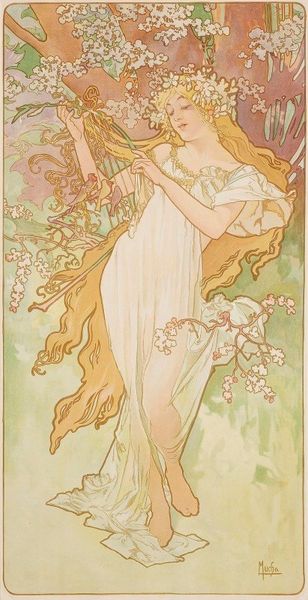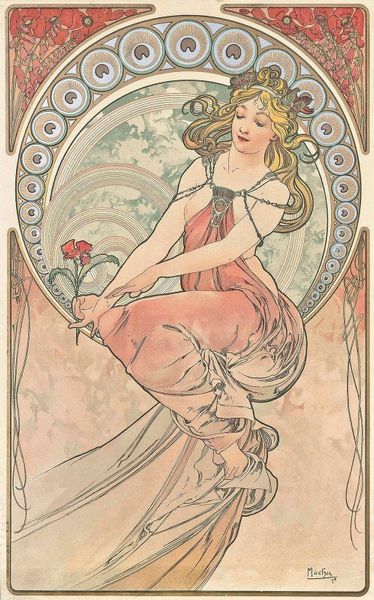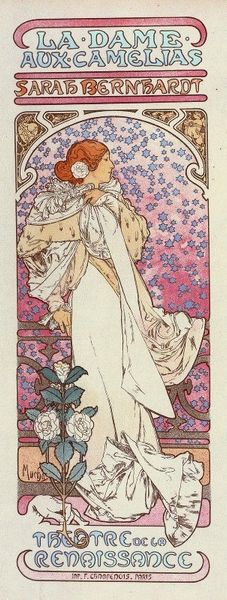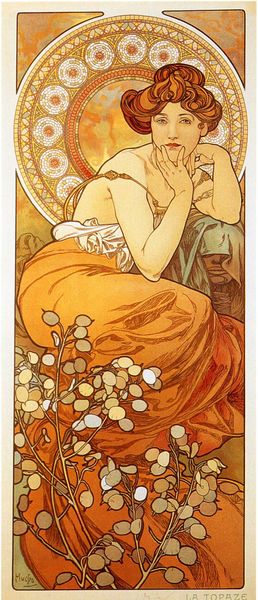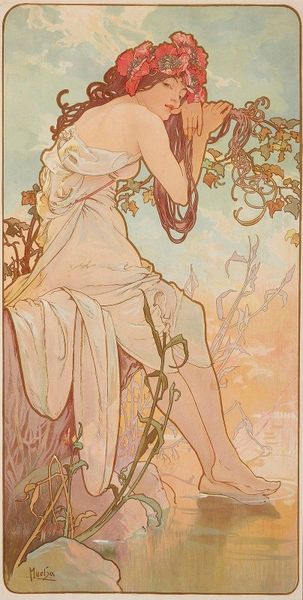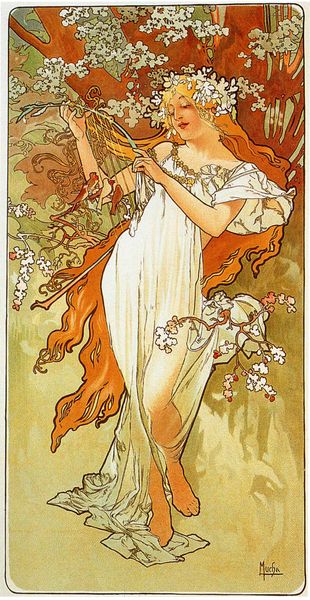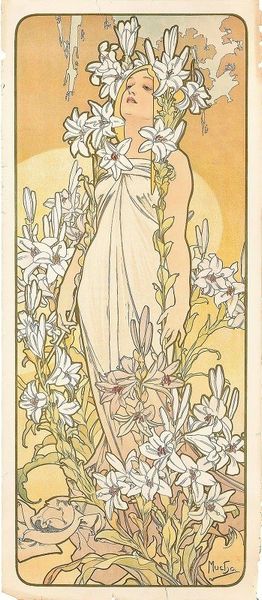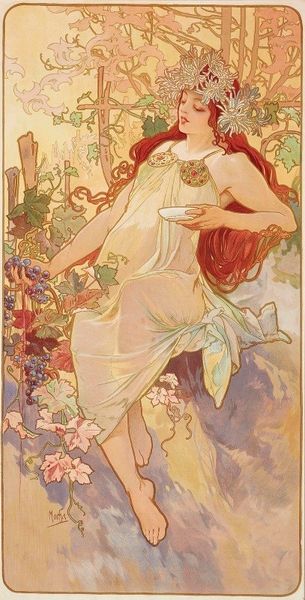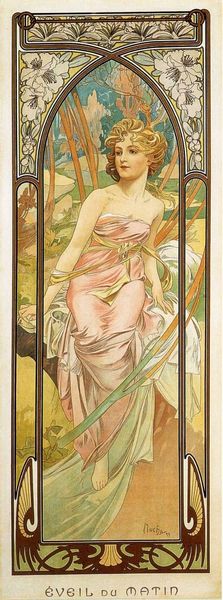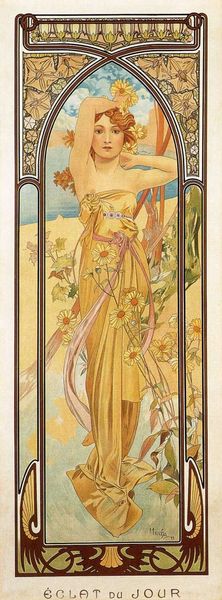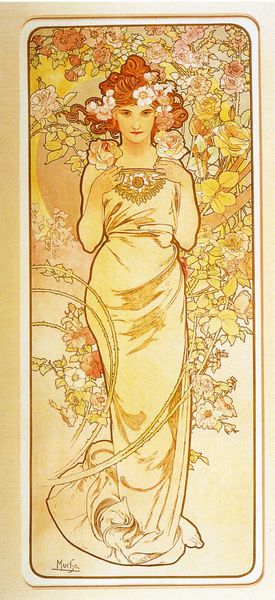
mixed-media, painting
#
portrait
#
mixed-media
#
art-nouveau
#
painting
#
landscape
#
figuration
#
symbolism
#
decorative-art
Copyright: Public Domain: Artvee
Alphonse Mucha created "The Carnation" during the Art Nouveau period, a time when art was breaking away from traditional academic styles, embracing decorative designs and the natural world. Mucha, as a Czech artist working in Paris, found himself in a society undergoing rapid change, with new ideas about gender and identity emerging alongside established norms. The woman depicted here is sensuous and earthy, connected to the natural world. But she's also subtly contained by it; the vegetation is lush and enveloping, almost obscuring her form. The carnation she holds may reference love and betrothal in the language of flowers. In this way, the piece reflects how women's identities were so tightly bound to expectations around love, beauty, and nature. Mucha's work often straddles the line between celebrating and confining femininity. "The Carnation" is an excellent example of that tension. It invites us to reflect on the complex and evolving representations of women in art and society.
Comments
No comments
Be the first to comment and join the conversation on the ultimate creative platform.

